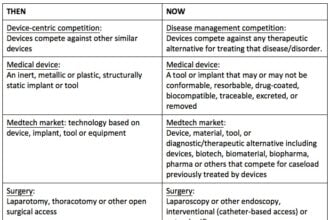Clinical testing is big business in the US, with millions of Americans undergoing preventive and treatment-related tests every year. According to 2022 statistics, the US laboratory market was worth $93 billion. The country had more than 319,000 Clinical Laboratory Improvement Amendment (CLIA) certified laboratories in the same year.
Besides the stiff competition, regulatory guidelines and customer expectations are the key challenges laboratory owners encounter. A recent Pew Survey reported that Americans support increased FDA oversight to ensure diagnostic testing accuracy by labs. This approach stems from the fact that one in ten people receiving a test result report inaccuracy.
An inaccurate testing result should be the worst nightmare for a clinical laboratory director because it can result in a poor patient care decision by an unsuspecting clinician. False negatives can delay life-saving care, while false positives can result in a patient getting unnecessary treatment. For a laboratory, inaccuracy can affect business reputation, trust, and credibility.
Quality control is essential to prevent errors in testing and reporting and maintain the credibility of a laboratory. If you run a diagnostic setup, here are the best practices you should implement to ensure quality and accuracy.
Invest in High-Quality Lab Equipment
The accuracy of diagnostic tests depends on the quality of lab equipment used to perform them. The CDC notes that 100% precision is impossible due to test limitations, specimen quality, and other factors. However, advanced equipment can make a difference. Investing in the latest tools and equipment should be a priority for lab owners.
Besides the testing equipment itself, you must also pay attention to cold storage products such as refrigerators, freezers, walk-in coolers, cryogenic storage, and ice machines. These products ensure the maintenance of optimal temperature for storage and testing of samples throughout the lab testing process.
According to D.A.I. Scientific Equipment, clinical laboratories should consider factors such as storage capacity requirements, temperature requirements, location, and security while choosing cold storage products. The goal is to equip your facility to ensure a proper environment for preserving the samples and maintaining the integrity of testing.
Build a Trustworthy Team
A recent study reports that medical errors in hospitals and clinics claim approximately 100,000 lives and cost $20 billion a year. Many of these start in clinical labs, with inaccurate testing leading to wrong treatment down the line. Having a qualified and trained team of diagnostic technicians on board is non-negotiable if you want to ensure quality and accuracy.
Additionally, your team should be ready to go the extra mile with quality and diligence. They must adhere to protocols and uphold best practices and industry standards. Hiring the right people is a good start, but you should invest in continuous training and development to keep them abreast with the latest tools and techniques.
Implement Technology
Running a clinical lab takes more than having top-grade equipment and skilled employees. Technology can be a game-changer when it comes to implementing best practices for quality and accuracy. Laboratory information management software (LIMS) solution is a valuable investment in this context. It holds the sample storage information and quality assurance results in one place.
Everyone in the team can access data from LIMS and provide feedback if necessary. Besides helping double-check results, this solution can optimize the workload within the organization. Everyone works toward a common goal, resulting in better outcomes with high precision in clinical reporting. Not surprisingly, nearly 77% of companies from research-intensive industries have LMIS in place today, and these include clinical labs.
Empower Your Staff with Autonomy
Maintaining quality and performance in a clinical laboratory is about having a cohesive group that works together as a team. For example, the technicians should work closely to ensure accuracy in the final reports. While individuals perform their share of work with autonomy, other team members will review it and contribute to outcomes.
A quality assurance manager should be a part of the team to ensure accuracy for each test report forwarded to the patients. Remember that quality tops efficiency in the laboratory setting, so it cannot be compromised for speed or production volume. The QA manager reviews data and offers guidance on potential improvement without interfering with individual autonomy.
Define and Track Key Performance Indicators
Another key best practice for quality and accuracy in laboratory settings is to define and track key performance indicators (KPIs). These are the goals you want to achieve to improve overall team performance. Researchgate lists parameters such as turnaround time, identification of errors, cost, timeliness, and sample hemolysis as typical KPIs used by labs to assess and improve overall team performance.
However, KPIs may vary according to the needs of the labs, the specific environment being measured, and the type of problem being solved. Identifying them requires critical thinking, such as parameters that will motivate and encourage your team to give its best. Here are a few examples of KPIs for quality-focused teams:
Length of time
Measure the time your team requires to release results for a batch of samples from beginning to end. The data in your LIMS enables you to forecast timelines and maintain the commitment to executing results and provide top customer service.
Backlog
Ensure that the laboratory has no backlogs and no team member is overloaded. There should be an optimal distribution of workload to streamline the lab processes and minimize the possibility of diagnostic errors.
Right First Time
It is critical to get the results right the first time to maintain the trust of your customers and the credibility of your laboratory. The efficiency of your team depends on its ability to make the measurements and associated documentation correctly the first time.
Whichever KPIs you choose, ensure that they do not pit lab members against each other. Rather, they should optimize the strengths of your team by enabling individuals to overcome their shortcomings and improve any bottlenecks present. Everyone should help each other grow instead of competing with each other.
Clinical laboratories can improve the quality and accuracy of their results by striving for excellence with every test they perform. These best practices can empower them to enhance their output without compromising quality.








